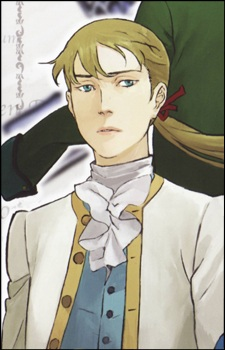
| Original Name (Japanese): | シャルル・ドエオン・ド・ボーモン |
|---|---|
| Romaji Name: | Sharuru do’eon do bōmon |
| Nicknames: | The Chevalier d’Éon, The Chevaličre d’Éon |
| Series: | Le Chevalier D’Eon |
| Age: | 81 (at time of death) |
| Weight: | N/A |
| Height: | N/A |
| Date of Birth: | October 5, 1728 |
| Blood Type: | N/A |
| Birthplace: | Tonnerre, France |
| Occupation: | French diplomat, spy, soldier, fencer |
Personality
Charles d’Éon de Beaumont, also known as the Chevalier d’Éon, is a complex and multifaceted character. As a French diplomat, spy, and soldier, d’Éon possessed a strong sense of duty and loyalty to his country. He was known for his intelligence, cunning, and adaptability, able to shift seamlessly between male and female identities as the situation demanded. Despite the social pressures and expectations of his time, d’Éon maintained a unique and fluid sense of gender identity that defied traditional norms.
Background
Born in 1728 in Tonnerre, France, d’Éon came from a noble family and received an extensive education that equipped him with a wide range of skills. He served as a soldier in the French army, participating in the Seven Years’ War, and later transitioned into a diplomatic role, spying for France while stationed in Russia. D’Éon’s experience and skills made him a valuable asset to the French government, and he was often called upon to undertake delicate and high-stakes missions.
Appearance
The Chevalier d’Éon is described as a striking individual with a lithe and androgynous physique. His features are considered both masculine and feminine, blurring the traditional boundaries of gender. D’Éon’s ability to seamlessly adopt both male and female clothing and mannerisms contributed to his enigmatic presence, often leaving those around him unsure of his true identity.
Skills
An experienced soldier, d’Éon was a skilled swordsman and fencer known for his prowess in battle. His diplomatic experience and intelligence gathering skills also made him a formidable spy, capable of navigating complex political landscapes and gathering valuable information for the French government. In addition, d’Éon’s adaptability and ability to assume different personalities allowed him to effectively carry out his covert operations.
Origin
The character of Chevalier d’Éon is based on the real-life figure of Charles d’Éon de Beaumont, an 18th-century French diplomat, spy, and soldier. D’Éon’s extraordinary life and the ambiguity surrounding his gender identity have captured the imagination of historians and artists alike, making him a fascinating and iconic figure in French history.
Charles d’Eon de Beaumont – FAQ
Here are 6-8 FAQs about Charles d’Éon de Beaumont from “Le Chevalier D’Eon”:
Who was Charles d’Éon de Beaumont?
Charles d’Éon de Beaumont was a French diplomat, spy and soldier who lived from 1728 to 1810. Born a biological male, he lived as both a man and a woman at various points in his life, becoming one of the most famous transgender figures in European history.
What was the controversy over d’Éon’s gender identity?
Throughout d’Éon’s life, there was much debate and speculation about her true gender identity. She presented herself as a woman for the last 33 years of her life, but the exact nature of her gender identity or biological sex has been the subject of much historical debate and uncertainty.
What were d’Éon’s major achievements?
d’Éon had a long and distinguished career as a diplomat, spy, and soldier. She served as a French diplomat in Russia and England, and also worked as a spy for the French government. d’Éon also fought as a military officer in the Seven Years’ War, achieving the rank of captain.
How did d’Éon’s gender identity affect his life and career?
d’Éon’s gender identity played an important role in her life and career. Their ability to present themselves as both male and female allowed them to navigate different social circles and conduct espionage and diplomatic activities more effectively. However, her gender identity also led to considerable controversy and hardship at times.
What happened to d’Éon after her death?
After d’Éon’s death in 1810, her body was exhumed and it was confirmed that she was biologically male, despite having lived as a woman for over 30 years. This revelation reignited debates about d’Éon’s gender identity and the nature of transgender identity in the 18th and 19th centuries.
How has d’Éon been portrayed in popular culture?
d’Éon’s unique life story has made them a fascinating figure in popular culture. They have been the subject of several biographies, historical novels, and even an anime series called “Le Chevalier D’Eon,” which dramatizes their life.


